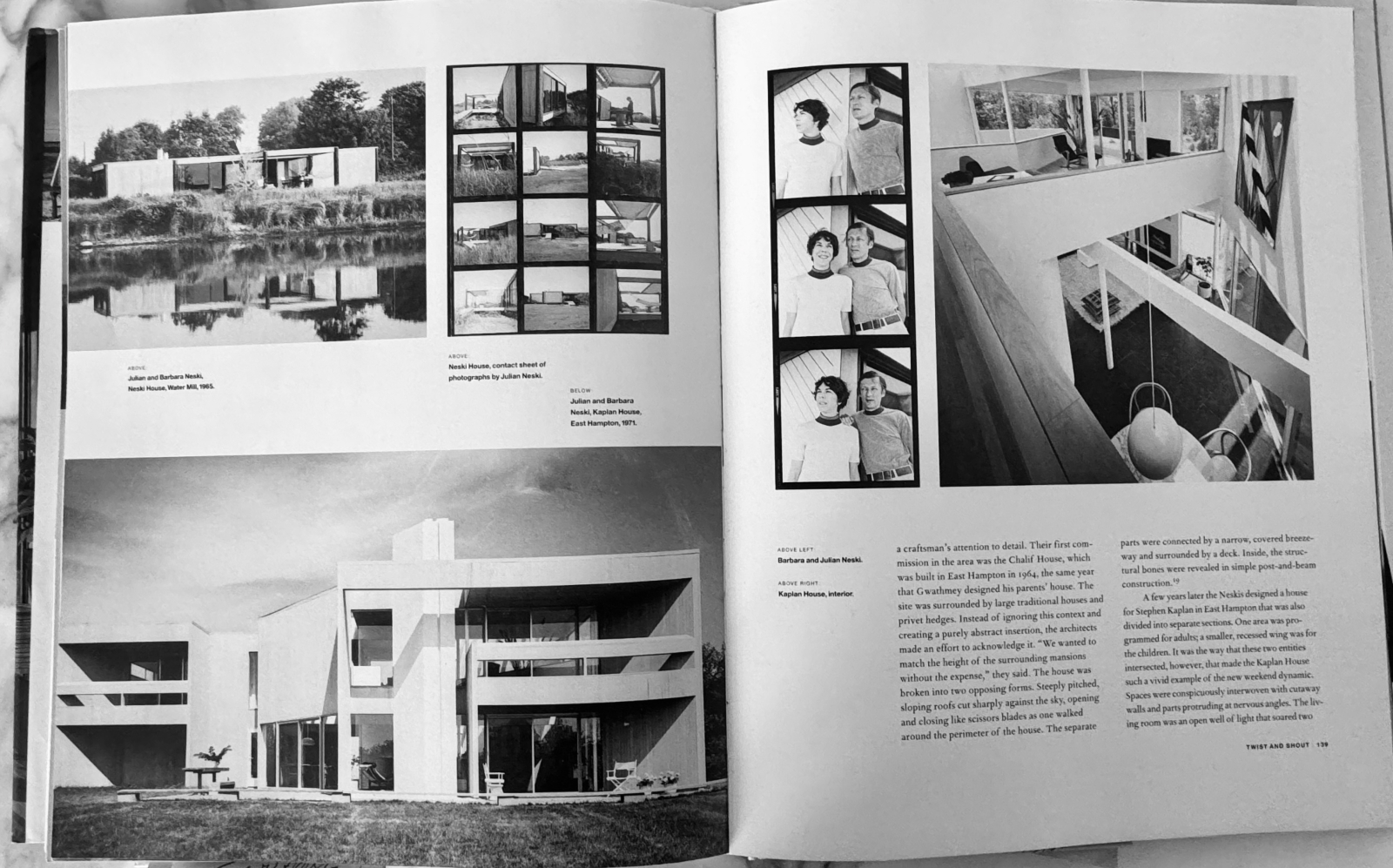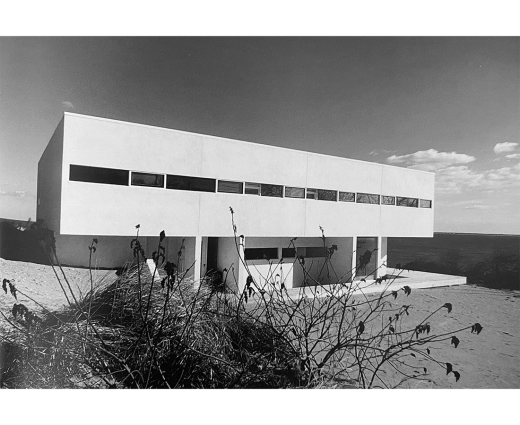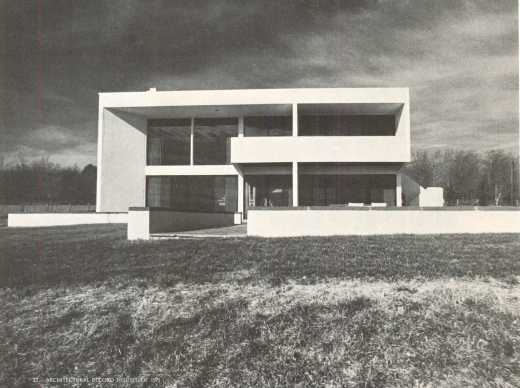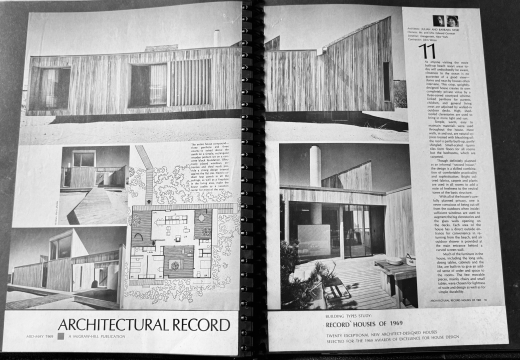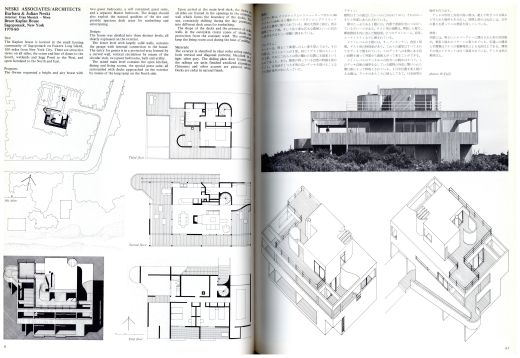Barbara Neski was an inspirational figure to so many, and shaped the Hamptons at a special time that looks in retrospect, more and more important. Her work will endure, and I am glad she lived long enough to see it get the respect and admiration it deserves.Paul Goldberger
Advocacy and the Architecture of Barbara Goldberg Neski 1928–2025
Author
Susan Horowitz
Affiliation
Hamptons20Century Modern
Tags
All of our work shares certain conceptual precepts: clarity of structure and form, a plan that reflects the realities of the site and of the client’s needs, the use of materials that are connected to local traditions, and finally a visual presence that does not depend on empty gestures.Barbara and Julian Neski
I didn’t know a house could be a work of art – Breuer was an eye-opener.Barbara Neski
Initially studying art, art history, and mathematics at Bennington, Barbara Goldberg was inspired to become an architect after viewing Marcel Breuer’s Robinson House. This led her to choose the Bauhaus-oriented Harvard GSD program created by director Walter Gropius, becoming one of its first women graduates in 1952. There she was especially drawn to the teaching of Buckminster Fuller. She went to work for Jose Luis Sert where she met fellow architect Julian Neski. They married and together worked for Breuer, eventually leaving and forming an equal architectural partnership as Neski Associates in 1960. Their first Hamptons house commission came through one of her Harvard contacts and led to a stream of unusually adventurous clients who shared their interest in the exploration of the private house as a site of experimentation. These houses were immediately recognized for their creativity and individuality in Architectural Record Houses, Global Architecture (GA), The New York Times design articles and other design/consumer media. She was always outspoken about the challenges for women in architecture and was cited in the Architectural League’s 1977 Women In American Architecture: A Historic and Contemporary Perspective, book and exhibition. She taught architecture at Pratt from 1978-1992 and became an AIA Fellow in 1985.
The Neskis designed more than 35 distinctive escape houses, rarely repeating themselves… most were built on eastern Long Island…where they were particularly known for a series of small, innovative vacation houses that became landmarks in weekend living.. While their work made explicit reference to the early European modernism of Le Corbusier and Breuer, the Neski houses were very much products of their time, symbolizing the urban style that characterized the Manhattan/Hamptons axis of the 1960's and 70's. All of their houses were relatively inexpensive to build and, unlike the high-maintenance trophy mansions of recent years, easy to maintain. Functionalist simplicity was combined with sculpturally expressive form.Alastair Gordon
The Neski practice lasted 40 years. In the years after Julian’s death in 2004, Barbara was profiled and interviewed in print, documentary, podcast and at the Harvard GSD. I was fortunate to interview Barbara, now well into her nineties, drawn to her perspectives during my survey of the conditions of the existing Hamptons Neski houses. She spoke passionately about working and living with Julian, their mutual design aesthetics, the unique relationships forged between architect and client in the course of designing a house, the economics of architecture, changing lifestyles and the conflicts between family, work and networking. When asked about the Neski archive she pointed to her studio where she enthusiastically shared models, plans, photographs, awards, books, architecture periodicals and scrapbooks. We discussed the importance of documentation and developing an exhibition about the period. The last Hamptons modern architecture exhibition was in 2005.
Beyond social media and journalism, exposing new generations of the public to the experience of these houses is important. The Neski’s own 1965 Hamptons house, featured in The New York Times, was on the 2024 Hamptons20CenturyModern house tour with an informal talk on their work that included noted preservationist/designer/architects who commented on their current restoration of another significant Long Island Neski House. The Neski House is considered a fortunate preservation story as it is adapted in situ as a guest house to the neighboring house, skillfully connected through landscaping. One of the three Global Architecture Neski Houses from 1978, restored 30 years ago by an exceptional owner who formed a relationship with the Neskis will be on a 2025 tour. Another house is expected to be restored and complimented by a separate building by an architect sensitive to historic references. Efforts are underway to connect with other current owners of Neski houses along with the work of the architect contemporaries that are surveyed.
Hamptons20CenturyModern, a non-profit advocacy organization formed by Tim Godbold, is committed to raising awareness of the exceptional range of innovative modernist residential architecture built from the design period of the 1960’s through the 1980’s. It aims to illuminate complex issues facing efforts to protect modern architecture in the Hamptons and effectively connect it to the continuum of the long architectural history of the area. Although aspects of this history have been documented in the past by noted architectural historians and journalists, this era has fallen under the radar and significant houses are continually threatened with demolition by a lack of comprehensive modern surveys, low public awareness, new critical attention, and landmark protection combined with high land values and real estate development. The impressive modern history of the house as a site of architectural experimentation in the Hamptons deserves the status of cultural resources that other US communities work successfully to protect including Palm Springs, New Canaan, Cape Cod, Sarasota and Los Angeles.
Influential architects who have projects in the Hamptons include Peter Blake, Andrew Geller, Charles Gwathmey, Richard Meier, Norman Jaffe, Barbara and Julian Neski, Paul Rudolph, Gordon Chadwick with George Nelson, Myron Goldfinger, Hamilton Smith, Ulrich Franzen, Ward Bennett, Paul Lester Wiener, Horace Gifford, Charles Moore, Robert Venturi and others. We are fortunate to have writers such as Paul Goldberger, Alastair Gordon, Caroline Rob Zaleski and others who have written about this recent history and are involved as advisors in public advocacy.
It is ironic that one of the criteria long used to evaluate innovative private houses is their inclusion in the archive of Architectural Record Houses issues. The September 2024 issue featured a powerful essay by Suzanne Stephens on the current extreme threats to Hamptons modern architecture and the crucial need for strong preservation measures. Seven Neski Houses were Architectural Record Houses, five of which survive today in the Hamptons. Advocacy that expands exposure to their work and Barbara Neski’s provocative perspectives could inspire new generations of architects and clients. It can present compelling reasons to legislate for preservation measures on the east end before this modern heritage is lost to demolition, available only in print.
About the Author
Susan Horowitz is the director of preservation projects at hamptons20centurymodern.org.
